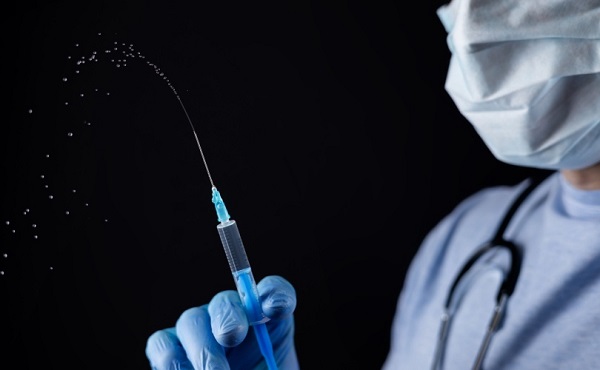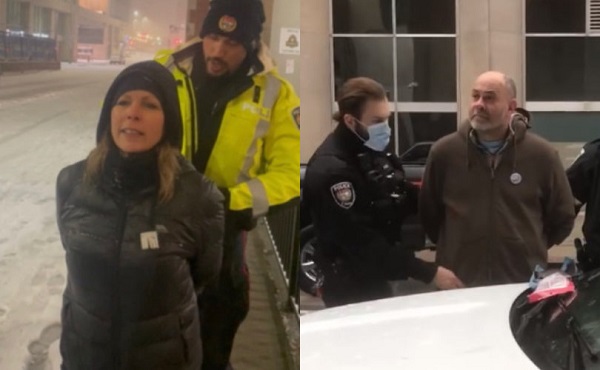Alberta
Alberta Budget 2024 – Health, Education, and Affordability announcements

Putting Albertans and Alberta families first
Budget 2024 is a responsible plan that puts Albertans and their families first by investing in strong health care, a modern education system and supports to keep life affordable.
Alberta’s government will ensure that the services and supports Alberta families rely on will be there for them. Budget 2024 continues to prioritize the delivery of high-quality, reliable health services across the province, with funding to continue planning the stand-alone Stollery Children’s Hospital, attract family physicians to rural areas and add more mental health and addiction facilities.
“With Budget 2024, we are ensuring that our province remains the best place to live and raise a family. We are investing in programs and services like new school builds, improved access to doctors and affordable housing to help Albertans stay healthy and build a successful future for themselves and their families.”
Budget 2024 highlights – Health care
- $475 million to modernize Alberta’s primary health care system, including:
- $200 million over two years to improve access to family physicians.
- $10 million for primary health care initiatives in Indigenous communities.
- $15 million to further develop a compensation model for nurse practitioners.
- $6.6 billion for physician compensation and development, up from $6.1 billion in Budget 2023.
- $1 billion over three years to transform the continuing care system to shift care to the community, enhance workforce capacity, increase choice and innovation, and improve the quality of care within the continuing care sector.
- $287 million over four years, part of a bilateral agreement with the federal government, for new mental health and addiction facilities, as well as for targeted supports for children and youth, adults and Indigenous communities.
- $62.4 million over three years to create two rural health professional training centres and expand physician education.
- $20 million over the next three years, including $17 million in new funding, to continue planning for a stand-alone Stollery Children’s Hospital.
- $35 million in capital funding over the next three years to purchase new emergency medical services vehicles and ambulances, upgrade the existing fleet and acquire additional equipment.
- $10 million over the next three years to create additional mental health professional spaces in post-secondary schools.
- $1.55-billion total expense to continue building the Alberta Recovery Model and ensure anyone suffering from the deadly disease of addiction or facing mental health challenges has an opportunity to pursue recovery.
“In Budget 2024, Alberta’s government is continuing to prioritize the delivery of high-quality, reliable health services across the province. This year’s record investment of $26.2 billion in health care will help us continue toward our goals of improving primary health care, adding capacity, reducing wait times, growing the workforce and advancing the Healthcare Action Plan.”
“Budget 2024 gives hope to those suffering from the deadly disease of addiction or facing mental health challenges. We are proud to invest in the Alberta Recovery Model and provide life-saving addiction treatment and care for those in need.”
Budget 2024 invests in a bright future for Alberta students with new and modernized schools, learning supports for students of all abilities and post-secondary programs to help build a skilled workforce.
Budget 2024 highlights – K-12 and post-secondary education
- $1.9 billion in capital funding over the next three years for planning, design or construction of new and modernized school projects across the province. This includes $681 million in new funding for 43 priority projects that will create 35,000 new or modernized student spaces.
- A total of 98 school projects are in various stages of the planning, design and construction process in 2024.
- $842 million in new operating funding over the next three years to further support enrolment growth, bringing additional enrolment-based funding to more than $1.2 billion over the next three years to enable schools to hire more than 3,100 education staff.
- More than $1.5-billion operating expense funding for educational learning supports for vulnerable students, children with specialized learning needs and other students requiring additional supports.
- $26 million over the next three years in additional funding for Program Unit Funding (PUF). PUF will total $209 million in the 2024-25 fiscal year.
- $103 million in capital funding over three years to increase modular classroom spaces to address the most urgent needs for additional student spaces across the province.
- $55 million in capital funding starting in 2025-26 for the University of Calgary’s multidisciplinary hub to add 1,000 spaces in science, technology, engineering and math (STEM) programs.
- $63 million in capital funding over the next three years for Olds College to renovate and expand student spaces in the WJ Elliot Building.
- $43 million in capital funding over the next three years for NAIT’s trades and technology learning facility.
- $13 million in capital funding over the next three years for Red Deer Polytechnic to create a new space to help businesses conduct applied research.
“The Alberta Advantage is back and booming, and people from across Canada and around the world are once again flocking to our incredible province. This of course puts added pressures on our schools, and our government is ready to help. Budget 2024 will support 43 new school projects to create and update 35,000 more student spaces. We’re providing $842 million in new funding to help our school boards hire more than 3,000 teachers and educational staff over the next three years. We will also boost funding to vulnerable students by increasing funding to the PUF program by $26 million.”
“Demand for skilled trades workers and graduates from STEM programs is projected to increase as our economy continues to grow and diversify. That’s why Alberta’s government is making targeted investments in post-secondary institutions to create more opportunities for students in high-demand fields of study.”
Although inflation is expected to ease this year, many families are still struggling with high grocery and utility costs. Budget 2024 helps keep life affordable and supports Albertans most affected by inflation.
Budget 2024 highlights – Affordability
- $717 million in capital grants to give Albertans and families access to more affordable housing, in line with Stronger Foundations – Alberta’s 10-year strategy designed to increase affordable housing supply and supports for Albertans.
- $355 million for the Alberta Child and Family Benefit to provide lower-income families with benefits, an increase of $31 million from last fiscal year.
- $980 million in savings for Albertans in 2024-25 because of indexation of personal income taxes.
- Budget 2024 formalizes the schedule to phase in a new personal income tax bracket on the first $60,000 of income, which would save individual taxpayers up to $760 per year once the tax cut is fully implemented.
- 25 per cent discount for seniors on personal registry services and medical driving tests, scheduled to come into effect in 2024-25.
- $38-million increase to operational funding for the Seniors Lodge, Social Housing and Specialized Housing and Rental Assistance programs in 2024-25.
- $22 million increased operating expense over the next three years to index foster, kinship and other caregiver rates, which will support stronger foundations for children in care and provide them with the care and protection they need for a brighter and secure future.
“With each strategic investment in affordable housing, reducing homelessness and supporting our seniors and people with disabilities, we are strengthening our communities and empowering vulnerable Albertans to thrive and succeed.”
“Our government is helping make life easier and more affordable for Alberta families. By helping foster caregivers increase stability for children and youth in care, and ensuring survivors of domestic and sexual violence have the resources they need to heal, we’re enabling connections that will lead to a brighter future for Alberta families.”
Budget 2024 is a responsible plan to strengthen health care and education, build safe and supportive communities, manage the province’s resources wisely and promote job creation to continue to build Alberta’s competitive advantage.
Alberta
Alberta takes big step towards shorter wait times and higher quality health care

From the Fraser Institute
On Monday, the Smith government announced that beginning next year it will change the way it funds surgeries in Alberta. This is a big step towards unlocking the ability of Alberta’s health-care system to provide more, better and faster services for the same or possibly fewer dollars.
To understand the significance of this change, you must understand the consequences of the current (and outdated) approach.
Currently, the Alberta government pays a lump sum of money to hospitals each year. Consequently, hospitals perceive patients as a drain on their budgets. From the hospital’s perspective, there’s little financial incentive to serve more patients, operate more efficiently and provide superior quality services.
Consider what would happen if your local grocery store received a giant bag of money each year to feed people. The number of items would quickly decline to whatever was most convenient for the store to provide. (Have a favourite cereal? Too bad.) Store hours would become less convenient for customers, alongside a general decline in overall service. This type of grocery store, like an Alberta hospital, is actually financially better off (that is, it saves money) if you go elsewhere.
The Smith government plans to flip this entire system on its head, to the benefit of patients and taxpayers. Instead of handing out bags of money each year to providers, the new system—known as “activity-based funding”—will pay health-care providers for each patient they treat, based on the patient’s particular condition and important factors that may add complexity or cost to their care.
This turns patients from a drain on budgets into a source of additional revenue. The result, as has been demonstrated in other universal health-care systems worldwide, is more services delivered using existing health-care infrastructure, lower wait times, improved quality of care, improved access to medical technologies, and less waste.
In other words, Albertans will receive far better value from their health-care system, which is currently among the most expensive in the world. And relief can’t come soon enough—for example, last year in Alberta the median wait time for orthopedic surgeries including hip and knee replacements was 66.8 weeks.
The naysayers argue this approach will undermine the province’s universal system and hurt patients. But by allowing a spectrum of providers to compete for the delivery of quality care, Alberta will follow the lead of other more successful universal health-care systems in countries such as Australia, Germany, the Netherlands and Switzerland and create greater accountability for hospitals and other health-care providers. Taxpayers will get a much better picture of what they’re paying for and how much they pay.
Again, Alberta is not exploring an untested policy. Almost every other developed country with universal health care uses some form of “activity-based funding” for hospital and surgical care. And remember, we already spend more on health care than our counterparts in nearly all of these countries yet endure longer wait times and poorer access to services generally, in part because of how we pay for surgical care.
While the devil is always in the details, and while it’s still possible for the Alberta government to get this wrong, Monday’s announcement is a big step in the right direction. A funding model that puts patients first will get Albertans more of the high-quality health care they already pay for in a timelier fashion. And provide to other provinces an example of bold health-care reform.
Alberta
Alberta’s embrace of activity-based funding is great news for patients

 From the Montreal Economic Institute
From the Montreal Economic Institute
Alberta’s move to fund acute care services through activity-based funding follows best practices internationally, points out an MEI researcher following an announcement made by Premier Danielle Smith earlier today.
“For too long, the way hospitals were funded in Alberta incentivized treating fewer patients, contributing to our long wait times,” explains Krystle Wittevrongel, director of research at the MEI. “International experience has shown that, with the proper funding models in place, health systems become more efficient to the benefit of patients.”
Currently, Alberta’s hospitals are financed under a system called “global budgeting.” This involves allocating a pre-set amount of funding to pay for a specific number of services based on previous years’ budgets.
Under the government’s newly proposed funding system, hospitals receive a fixed payment for each treatment delivered.
An Economic Note published by the MEI last year showed that Quebec’s gradual adoption of activity-based funding led to higher productivity and lower costs in the province’s health system.
Notably, the province observed that the per-procedure cost of MRIs fell by four per cent as the number of procedures performed increased by 22 per cent.
In the radiology and oncology sector, it observed productivity increases of 26 per cent while procedure costs decreased by seven per cent.
“Being able to perform more surgeries, at lower costs, and within shorter timelines is exactly what Alberta’s patients need, and Premier Smith understands that,” continued Mrs. Wittevrongel. “Today’s announcement is a good first step, and we look forward to seeing a successful roll-out once appropriate funding levels per procedure are set.”
The governments expects to roll-out this new funding model for select procedures starting in 2026.
* * *
The MEI is an independent public policy think tank with offices in Montreal, Ottawa, and Calgary. Through its publications, media appearances, and advisory services to policymakers, the MEI stimulates public policy debate and reforms based on sound economics and entrepreneurship.
-

 2025 Federal Election1 day ago
2025 Federal Election1 day agoRCMP memo warns of Chinese interference on Canadian university campuses to affect election
-

 2025 Federal Election1 day ago
2025 Federal Election1 day agoResearchers Link China’s Intelligence and Elite Influence Arms to B.C. Government, Liberal Party, and Trudeau-Appointed Senator
-

 MAiD2 days ago
MAiD2 days agoDisability rights panel calls out Canada, US states pushing euthanasia on sick patients
-

 Justice2 days ago
Justice2 days agoCanadian government sued for forcing women to share spaces with ‘transgender’ male prisoners
-

 Alberta2 days ago
Alberta2 days agoAlberta takes big step towards shorter wait times and higher quality health care
-

 Energy2 days ago
Energy2 days agoTrump signs four executive orders promoting coal industry
-

 COVID-1922 hours ago
COVID-1922 hours agoFauci, top COVID officials have criminal referral requests filed against them in 7 states
-

 2025 Federal Election22 hours ago
2025 Federal Election22 hours agoMark Carney vows to provide sterilizing puberty blockers to children ‘without exception’










